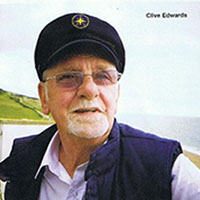hemsby independent lifeboat station
The Hemsby Independent Lifeboat Service came fully into service in 1977 following the formation of the Hemsby Volunteer Inshore Rescue Club in 1976 as a result of their having been nine fatalities as a result of drowning in the previous four years along the popular local North Sea beaches.
The Hemsby Lifeboat Service is especially notable as a result of it role in covering a very significant area of the Norfolk Broads as well as the nearby Norfolk beaches; in fact well over 50% of the call-outs for the Hemsby boats are in response to incidents on The Broads rather than to those at sea and one of the two (soon to be three) Hemsby Lifeboats is designated as “The Broads Lifeboat” and this well-equipped Dory style lifeboat can be towed by a dedicated Hemsby Lifeboat Station vehicle to no less than thirty-two launching sites around the Broads.



It is this towing vehicle, which is virtually identical to those used by the Coastguard Rescue Teams, which has recently become a “cause celebre” for those of us involved in maritime Search & Rescue because as a result of a complaint by a member of the public, the Hemsby Lifeboat Station has been informed by the Police that because the Hemsby Lifeboat is independent of the RNLI they are NOT authorised to tow their boat to call-outs using a blue light and/or two-tone horns (known to most of us a “blues ‘n' twos”).
As things stand, the Police are quite correct as regards stating that under current regulations only lifeboats belonging to the RNLI are allowed to use “blues ‘n' twos” so the Norfolk & Suffolk Boating Association, of which the MNA Boat Club is an affiliated member have written to the Minister of Transport to seek a change to the regulations that would enable independent lifeboat stations to use “blues ‘n' twos” in the same way that RNLI lifeboat stations are authorised to.
Support for this initiative by the NSBA, the MNA Boat Club and the Institute of Seamanship has been forthcoming from various organisations involved in maritime safety including from the Broads Authority and the National Independent Lifeboat Association, and the response from the Ministry of Transport has been positive at least as far as saying that they “have the question under review and that a decision is likely to be made by September this year”.



Before recommending to the NSBA management committee (as their rep on the Broads Authority Boat Safety Management Group) that the NSBA Chairman should make representation to the Minister about this restriction imposed on Hemsby and other independent lifeboat stations, I took the opportunity to make two visits to the Hemsby station. During these visits, I was made very welcome by both Daniel Hurd their cox’n and by their chairman Chris Batten. They took a lot of trouble to show me around their station and their lifeboats, vehicles and other SAR assets which were as impressive as any I’ve seen elsewhere in literally dozens of visits to (mainly RNLI) lifeboat stations. Indeed, on my second visit, I was accompanied by the former Lifeboat Operations Manager of an RNLI station on the south coast who said he wishes his local lifeboat station was as modern and well equipped as Hemsby!
So on behalf of our Club I wish the Hemsby Station well, not only with their quest to be treated the same as RNLI stations as regards the use of “blues ‘n' twos” but also because, as many of you will have seen on TV, during last winter Hemsby village, and the lifeboat station, suffered huge storm damage: several properties ended up being washed into the sea, and whilst the lifeboat station itself was safe, the slipway was largely washed away and their 7.5m ILB could no longer be launched from the station!

